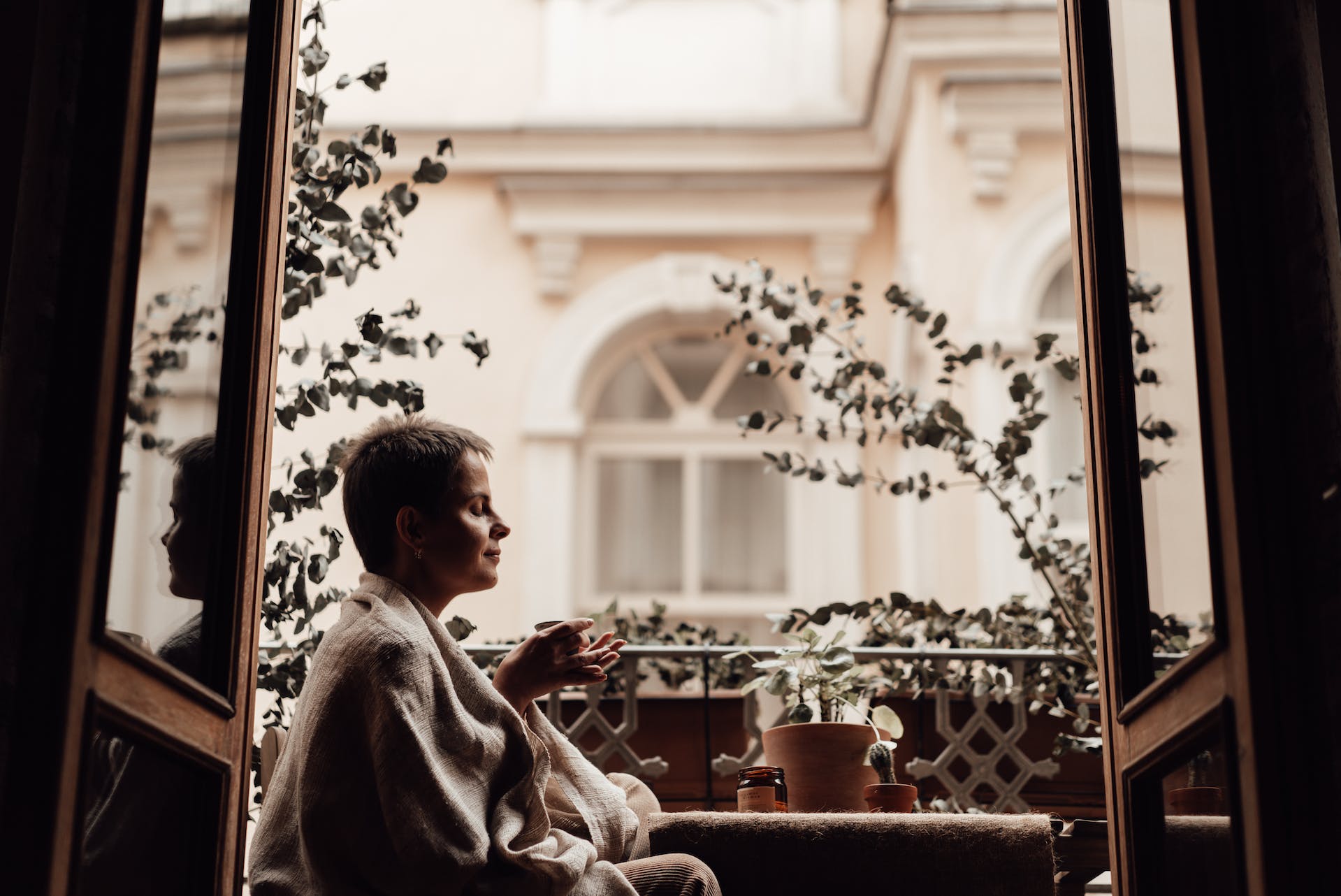
“I want you to focus all your attention on being present in this moment.”
This was the challenge that my friend John gave to a room full of middle and high school students. Every other week on Wednesday evenings, my husband and I spend time volunteering at a local youth ministry. At nearly every gathering there is an allotted time in the evening when an adult will share a lesson with the students. John was the one giving the lesson this particular evening.
John continued on, “I really want you to focus on this moment. Where you are, what you see, what you feel, what you hear.” The room went silent…for just a moment.
Breaking the silence, John said, “And just like that, that particular moment in time has come and gone. You will never get that moment back.”
John went on to make the point that life is a collection of moments. Some moments we anticipate and value more than others—graduations, the birth of a child, landing a dream job, winning a championship game. But even these “milestone” moments come and go, just like the moment when John got a room of teenagers to sit silently for a few seconds.
A Mindful New Year
I share this story because it challenged me to think about how I spend the moments between the “milestone” moments in life—the mundane, everyday moments of the here and now. Countless times the words “I just want to live in the present” have left my mouth, just for my mind to be consumed with future worries or anticipations in the next breath.
This is a time of the year when a lot of people think about change. It’s a new year—a fresh start to pursue the changes we want to make in our lives. One of my hopes for this year is to integrate practices in my life that help me savor the present. I invite you to join me in making 2024 a more mindful, intentional year of living in the here and now.
Why Care About the Present?
The human pursuit of defining and understanding the present moment is thousands of years old, with various spiritual leaders and philosophers attempting to answer questions on this subject.
In a Mindful article, Eric Langshur and Nate Klemp capture the difficulty of defining the present by saying,
“There’s also something quite mysterious about this moment. It’s not like the past, which stretches infinitely behind us. It’s also not like the future, which stretches infinitely ahead. In fact, the moment you try to capture it, it’s gone. It becomes just another part of the past…When we manage to enter the razor-thin moment of presence, something amazing happens: anxieties and resentments dissolve. We experience more ease, calm, and peace. In short, we experience more well-being.”
I love their description of “the razor-thin moment of presence.” The present truly is this razor-thin boundary between past and future, and yet it holds within it countless possibilities. Practicing presence matters because it raises your awareness of the full range of possible choices and experiences available to you at any moment.
Benefits of Practicing Mindfulness
In modern-day mental health practice, mindfulness teaches you to be fully attentive and present in the moment. Mindfulness teaches you to be fully aware of your present thoughts, feelings, physical sensations, and surroundings, without judgment. Let’s explore some of the practical benefits of practicing mindfulness.
Improved Mental Health
Numerous studies have shown that incorporating mindfulness into one’s routine can improve mental health, significantly reducing symptoms of anxiety and depression, enhancing emotional regulation, and improving overall mental resilience. The American Psychological Association (APA) says researchers believe the benefits of mindfulness are related to its ability to lower the body’s stress response. In this article, the APA highlights how more than 200 studies of mindfulness-based therapy have found this technique to be effective in reducing stress, anxiety, and depression.
Increased Focus and Attention
Increased focus and concentration are key cognitive benefits of mindfulness practices. Intentional focus, often honed through activities like meditation, has been shown to enhance cognitive functions. By regularly engaging in mindfulness, you gain increased control over your attention and reduce mind-wandering, leading to improved concentration. In addition, mindfulness fosters cognitive flexibility, allowing you to adapt your thinking to changing situations. As a result, the ability to concentrate on tasks and make sound decisions is heightened.
Combat Hurriedness
In a culture characterized by constant hurriedness, mindfulness emerges as a powerful antidote. By encouraging you to consciously engage with the present moment, mindfulness interrupts the relentless rush of modern life and invites a deliberate slowing down. This intentional pause provides you with a space to reassess priorities and make more intentional choices.
Intentional Relationships
Being fully present in your interactions with others is crucial to establishing meaningful relationships. When individuals embrace the skill of being present, they exhibit a genuine engagement with others that goes beyond surface-level communication. By attentively tuning into the words, emotions, and nuances of those around you, genuine connection and empathy are established.
Quick Tips: Ways to Practice Mindfulness
Here are some simple suggestions of ways to build mindfulness into the rhythm of your life.
- Meditation: Establish a routine of daily meditation. If this is brand new to you, start small. Try a guided meditation for five minutes a day for one week. A simple Google search of “5-minute guided meditation” will yield countless results. You can also use apps such as Headspace and Calm are other ways to access these daily meditations.
- Journaling: Writing can be an effective way of being present with your thoughts and feelings. Mindful journaling invites you to observe your inner world without criticism. Journaling is a versatile practice ranging from free-form writing to structured prompts.
- Mindful Movement & Breathing: Mindfulness can be a whole-body experience. Exercise forms such as yoga and tai chi are known for emphasizing attention to breath and bodily sensations. In addition, going for mindful walks can reap the same benefits if these exercise forms don’t interest you.
Guided Mindfulness Exercise
While you may not be in an environment to engage with this practice right now, I wanted to include a simple mindfulness exercise for you to come back to later. If you can spare a few minutes now, try this out!
Begin by finding a quiet and comfortable space where you won’t be disturbed. Sit in a relaxed yet alert posture, and gently close your eyes if you feel comfortable doing so. Take several seconds to sit silently, centering yourself and your focus on this moment.
Awareness of Breath:
Direct your attention to your breath. Notice the sensation of each inhale and exhale. Feel the rise and fall of your chest or the gentle expansion and contraction of your abdomen.
Counting the Breath:
As you breathe in, silently count “one,” and as you breathe out, count “two.” Continue counting each breath cycle up to ten. If your mind begins to wander, gently guide it back to the breath without judgment.
Expanding Awareness:
Expand your awareness beyond the breath to include sounds in your environment. Notice any distant sounds, then gradually bring your attention back to the breath.
Body Scan:
Slowly scan your body for any areas of tension or discomfort. Start your focus at the top of your head and work down to the tips of your toes. If you notice tension or discomfort in an area of your body, breathe into those areas, allowing the breath to bring a sense of ease and release.
Open Awareness:
Open your awareness to your thoughts and emotions. Observe them without judgment. Imagine them as passing clouds in the vast sky of your mind.
End of Exercise:
As we conclude this mindfulness exercise, gently bring your attention back to the present moment. Wiggle your fingers and toes, take a deep breath, and when you’re ready, slowly open your eyes. Take a few seconds to acknowledge the presence you cultivated during this mindfulness exercise.
Final Thoughts
As we bring this exploration of mindfulness and the art of being present to a close, I’m reminded of John’s challenge to the group of students: “I want you to focus all your attention on being present in this moment.” It’s a challenge that resonates far beyond the walls of that room. Life is an intricate collection of moments—some anticipated and cherished, others fleeting and seemingly mundane. Yet, each one is a meaningful part of your narrative.
It’s easy to get caught up in the rush of life, but let’s not forget that amidst the pursuit of milestone moments, the real beauty lies in the every day, the here and now. As we step into 2024, let’s make it a year marked by mindfulness—a conscious, intentional journey of savoring the present. After all, it’s in these razor-thin moments of the present that life’s true richness unfolds. So, here’s to living this year with heightened awareness, embracing the ordinary with extraordinary attention. Cheers to a mindful and intentional year ahead!
*Ginger Hanny, MSW, LSW is a therapist at Journey to Joy Counseling. Ginger enjoys doing individual counseling with adults. She also provides teen and adolescent counseling. Journey to Joy Counseling serves the Indianapolis area, including Carmel, Fishers, Noblesville, Zionsville, and Westfield.



